Mastering the Art of a Six Card Tarot Reading
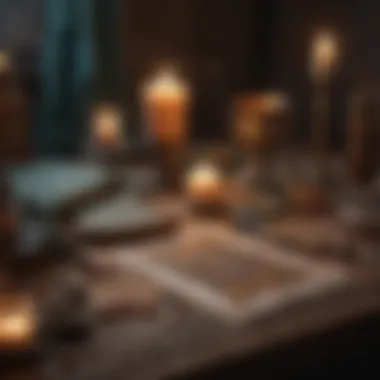
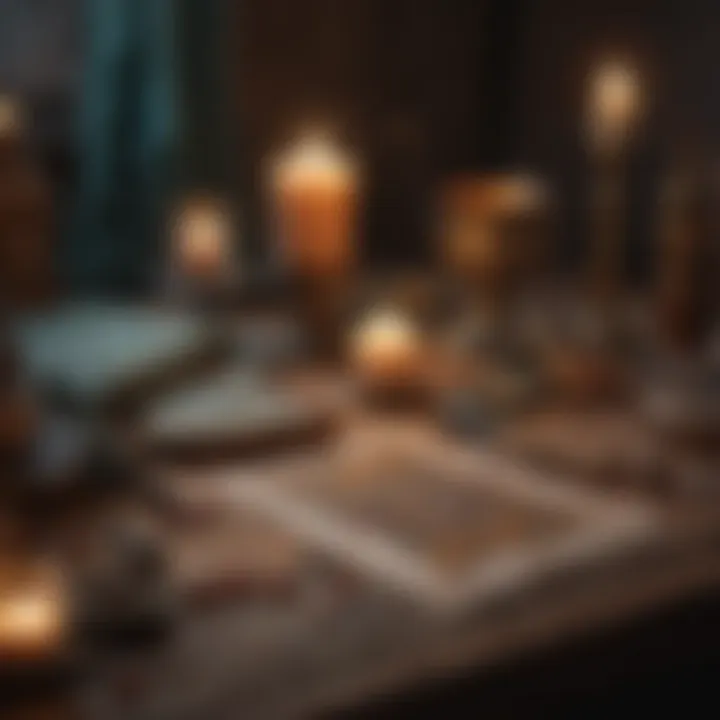
Intro
Tarot reading holds a unique fascination, often shrouded in mystery and perceived complexity. However, a six card reading simplifies the practice, making it more accessible for both beginners and seasoned practitioners alike. It provides a structured approach to interpreting personal situations through the lens of tarot. This guide will delve into various aspects of conducting a six card tarot reading, demystifying the process and encouraging deeper insights.
The approach is not just about pulling cards; it involves a clear understanding of what each position represents and how the cards interact with each other. By following this guide, you will learn how to prepare for a reading, interpret card positions, and apply effective strategies for interpretation. Everyone, whether novice or expert, can benefit from these insights.
As we explore the characteristics of tarot and the methods of conducting a six card reading, we aim to equip readers with the practical knowledge necessary to harness the power of tarot for personal growth and clarity.
"Tarot is a mirror reflecting the complexity of the psyche, offering insights into personal matters that extend beyond mere fortune-telling."
Understanding the intricacies of tarot can lead to profound revelations in one’s personal narrative. This guide is designed to extract the essential components from a six card spread and translate them into compelling interpretations.
Intro to Six Card Tarot Readings
The six card tarot reading serves as a powerful tool for insight and reflection. It allows the viewer to gain perspective on various aspects of their life. In this format, each card has a specific position, providing a structured way to interpret the symbolism. This enables a comprehensive analysis of past, present, and anticipated future influences.
Understanding the Basics of Tarot
Tarot is an ancient method of divination that uses a deck of 78 cards. Each card carries unique meanings and symbolism. The structure of the tarot deck is typically divided into two parts: the Major Arcana and the Minor Arcana. The Major Arcana consists of 22 cards representing significant life events and spiritual lessons. In contrast, the Minor Arcana comprises 56 cards, which provide insights into everyday situations and challenges.
Understanding these basics is crucial. It lays the foundation for more advanced readings. Each card's imagery and position within a spread can alter its meaning significantly. Therefore, knowledge of essential card meanings is paramount for effective interpretation.
Benefits of a Six Card Spread
A six card spread presents several advantages. First, it provides a more detailed analysis than simpler spreads. This depth can reveal layers of meaning that a single card or three card spread may overlook. The six card format encourages introspection and can uncover underlying issues.
- Comprehensive Insight: Each card's position is intended to address specific queries. This helps in addressing complex life situations.
- Flexibility: This layout can be adapted for various questions, allowing the reader to focus on relationships, career, or personal growth specifically.
- Structured Analysis: With a defined structure, the six card spread organizes thoughts and interpretations clearly, making it easier to draw connections between cards.
By using the six card tarot spread, you can experience a richer engagement with the cards and their meanings, enhancing your interpretative skills.
Understanding these aspects of six card readings will significantly improve your ability to work with tarot. This practice not only fosters spiritual growth but also provides valuable life insights.
Preparation for the Reading
Preparation is a critical phase in conducting a six card tarot reading. This step sets the tone for the session and can significantly impact the outcome of your interpretations. Ensuring the right conditions and mindset allows for a deeper connection with the cards. When the preparatory aspects are handled well, the reading itself can be more insightful and meaningful.
Creating the Right Environment
The environment in which you conduct your tarot reading is crucial. The surrounding influences can affect your concentration and the energy flow. Select a quiet space that is free from distractions. Dim lighting or candles can create a calming atmosphere conducive to reflection.
Incorporate personal elements that resonate with you, such as crystals or incense, which can enhance the spiritual ambiance. Keep your reading area tidy; clutter can create mental noise and divert your focus from the reading itself.
- Choose a location that feels safe and private.
- Ensure proper lighting to avoid strain on your eyes.
- Consider using sounds, such as soft music, to inspire a meditative state.
"A well-prepared environment is at the core of translating spiritual insight into practical wisdom."
Selecting the Tarot Deck
Choosing the right tarot deck involves personal preference but also an intuitive connection. There are thousands of tarot decks available, each with unique artwork and symbolism. Find a deck that resonates with you. What attracts you may be the imagery or the themes depicted.
Some popular decks are the Rider-Waite Tarot, Thoth Tarot, and the Wild Unknown Tarot. If you are a beginner, a traditional deck may serve you well as the meanings are widely accessible. However, if you have experience, feel free to explore decks that inspire you or align with your specific reading style.
Keep in mind:
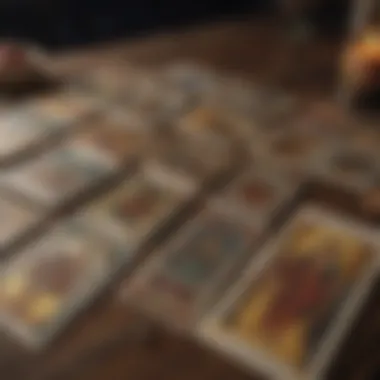
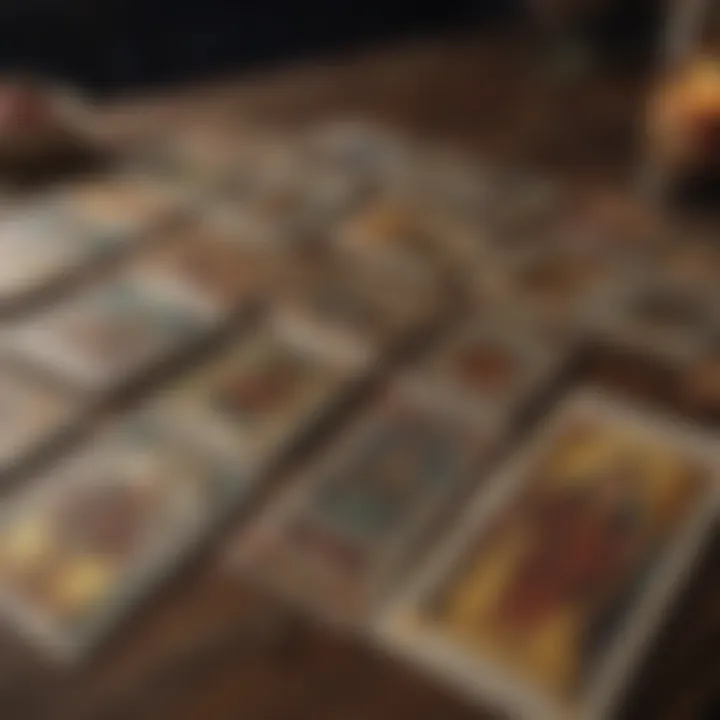
- A familiar deck reduces the cognitive load during reading.
- Selecting a deck with clear illustrations enhances the depth of interpretation.
Formulating a Question
Having a clear question in mind is essential before performing a six card spread. This can significantly guide the reading and provide context to the cards drawn. A vague question often leads to vague answers. Think deeply about the matter at hand and articulate it clearly.
Consider these aspects:
- An open-ended question permits a range of insights, while a yes/no question may restrict the guidance.
- Refine your question to focus on specific areas of concern or curiosity.
To create a suitable question, try to follow these steps:
- Identify the topic you want insight on, be it relationships, career, or personal growth.
- Write down the question in a complete sentence, fostering clarity.
- Maintain a mindset of openness to the answers you receive and avoid leading the cards toward a desired outcome.
In summary, proper preparation for a six card tarot reading cannot be overstated. It enhances the quality of the insights gained and can lead to transformative personal revelations.
The Layout of the Six Card Spread
The six card tarot spread is a structured format that allows the reader to gain insights into various aspects of a situation. Each card in this layout occupies a specific position, corresponding to different temporal and analytical perspectives. This systematic arrangement not only clarifies the individual meanings of the cards but also elucidates the relationships among them. Clarity in layout ensures that both novice and experienced readers can interpret the messages with precision.
Position One: The Past
The first card drawn represents the past. It is crucial as it lays the groundwork for understanding the current situation. This card can reveal previous influences, experiences, or events that have shaped the querent’s circumstances. By reflecting on this historical context, the reader can identify patterns or lessons that inform the present. Assessing the past helps in acknowledging how past actions or decisions resonate through time.
Position Two: The Present
The second position signifies the present moment. It captures the current energy surrounding the querent’s inquiry. This card provides valuable insight into their mindset, circumstances, or challenges faced at the time of the reading. Understanding the present helps to ground the reading in reality, allowing the reader to offer actionable advice or predictions. Here, the focus is on what is immediate, guiding the querent to navigate the now effectively.
Position Three: The Future
Position three addresses potential future outcomes. This card signals what may unfold if current paths are followed. It often embodies possibilities that hinge on the querent's actions and choices. While the future is not predetermined, understanding these potential outcomes can empower the querent to make informed decisions. The emphasis here is on foresight, pushing the querent to consider how their present influences their trajectory.
Position Four: Internal Influences
The fourth position examines internal influences, including thoughts, feelings, or subconscious motivations. This card offers insight into the querent’s inner world, revealing any fears, desires, or blockages. Acknowledging these internal factors is essential as they often directly affect how the querent responds to external circumstances. This position encourages introspection, allowing for deeper self-awareness and personal growth.
Position Five: External Influences
The fifth card sheds light on external influences affecting the situation. This may include the people, events, or environment surrounding the querent. Recognizing these factors helps to contextualize the concerns raised in the reading. The external influences can often be seen as factors that the querent may need to navigate, highlighting the importance of adaptability in the face of circumstances beyond their control.
Position Six: The Outcome
The final position encapsulates the likely outcome based on the current set of circumstances and influences depicted in the prior cards. It summarizes the potential resolution, providing closure and direction. However, it is essential to note that this outcome is not set in stone. It serves as guidance to motivate the querent to take appropriate actions to reach their desired future. Thus, this card acts as a capstone, bringing together the reading's insights and encouraging proactive steps towards change.
Interpreting the Cards
Interpreting the cards is a critical aspect of conducting a six card tarot reading. This phase allows the reader to derive meaningful insights from the individual cards while also understanding how they interact within the defined positions. Each card carries its symbols and meanings, which can provide guidance and clarity concerning one's life situations. A deft interpretation can illuminate paths, highlight challenges, and suggest possibilities.
When interpreting cards, it is essential to engage with both the explicit meanings of the cards and the broader context established by their positions and relation to one another. This interpretation process helps strengthen the overall reading, allowing for deeper, multi-dimensional insights.
Understanding Card Meanings
Understanding the meanings of the cards is foundational in tarot readings. Each card holds distinct imagery and symbolism, often rooted in historical and cultural contexts. For instance, The Fool usually represents new beginnings or ventures, while The Tower often denotes abrupt change or disruption.
To grasp these meanings:


- Study guidebooks: Explore literature that delves into various interpretations of the cards.
- Intuitive interpretation: Build a personal connection with the cards outside conventional definitions. Familiarity promotes insight that is tailored to personal experiences.
- Practicing: Regular practice with the cards helps refine understanding and intuition. Lay out different card combinations and reflect on their meanings regularly.
Understanding each card’s nuances provides a crucial backdrop for the reading and informs how they speak to the question posed.
Combining Card Interpretations
Combining card interpretations is about looking at the synergy of multiple cards together. It deepens the interpretation beyond the singular meaning of each card. For example, if you draw The Lovers and The Tower, the reading may suggest relationship challenges that can lead to significant transformation.
Here are vital steps to combine card meanings effectively:
- Analyze card relationships: Identify how the cards relate to each other based on their positions. This step offers insights into dynamics at play.
- Reflect on overarching themes: Look for patterns across the cards. Common symbols, numbers, or colors can lead to a trend in interpretation.
- Use numerology and elements: Understand the significance of numbers or elemental associations in the context of the spread. Certain numbers may amplify meanings, offering additional layers of understanding.
Considering Card Reversals
Card reversals can add complexity and depth to a reading. When a card appears upside down, it often alters its meaning. This aspect is crucial for a comprehensive interpretation.
When considering card reversals:
- Recognize the potential shift: Reversed cards may indicate blockage, delay, or a need for introspection. For instance, a reversed King of Pentacles may suggest financial instability or a lack of control.
- Balance with upright meanings: Understand reversed meanings through their upright counterparts. This technique can provide a complete picture of the situation.
- Avoid rigid interpretations: While traditional meanings exist, flexibility is essential. Sometimes reversed cards may be interpreted positively, denoting a release from burdens rather than failure.
In summary, interpreting the cards in a six card tarot reading involves understanding their meanings, combining interpretations, and considering possible reversals. This process creates a rich tapestry of insights. By embracing these elements, readers can maximize readability and provide valuable guidance.
Practical Tips for Effective Readings
When conducting a six card tarot reading, it is essential to implement practical tips that enhance the effectiveness of the reading. Well-informed strategies can lead to more insightful interpretations and clearer understanding. Therefore, the following sections will provide specific elements to consider, benefits of each, and how these practices can shape a more meaningful tarot experience.
Reflecting on the Reading
Once the reading is completed, taking time to reflect is very important. This allows the reader to process the insights gained and understand their implications. Spend a few moments alone with your thoughts. Ask yourself important questions about the reading:
- What emotions did the reading evoke?
- Did the cards resonant with situations in your life?
- How do the themes interconnect?
Reflecting helps to clarify not just what the cards represent but how they relate to your personal journey. It can enhance your intuition and improve your future readings. You develop a deeper sense of awareness about the patterns in your life, thus informing your growth.
Documenting Insights
Documenting insights from each reading is another useful practice. Keep a tarot journal where you write down your interpretations, feelings, and any related life events experienced after the reading. This acts as a valuable reference for future readings. Here are a few tips on maintaining your journal:
- Date each entry to track your progress over time.
- Describe your emotional state during the reading; this context can prove insightful later.
- Record the question asked, along with card positions and meanings.
Over time, this written record creates a rich tapestry of your tarot experiences, allowing for deeper understanding, and aiding in recognizing recurring themes or insights over time.
Seeking Further Guidance
Sometimes, readings present challenges that require additional insight. In such instances, seeking further guidance is crucial. This can happen through:
- Consulting other tarot practitioners or joining community discussions on platforms like reddit.com.
- Engaging with tarot books or online resources will expand your interpretations and introduce new perspectives.
- Instinctual journaling, where you continue to write in your journal post-reading about any evolving thoughts or feelings.
By reaching out for additional insight and learning, you can deepen your understanding and potentially resolve uncertainties that arise.
"Tarot is not just a tool; it is a mirror reflecting our inner truths."
In summary, practical tips enhance the effectiveness of a six card tarot reading. Reflecting on the reading, documenting insights, and seeking further guidance are key components. Each practice contributes to a comprehensive understanding of the tarot, and cultivates a more profound connection with the cards.
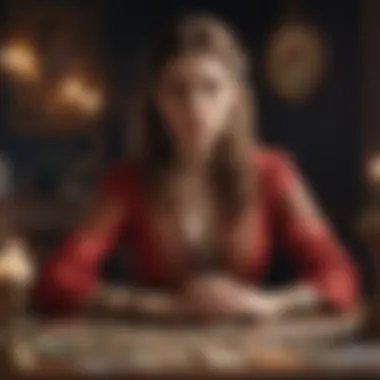

Common Challenges
Engaging in a six card tarot reading can present unique challenges. Understanding these challenges is essential, as it allows practitioners to navigate through the complexities that may arise during readings. The process of interpreting tarot cards can elicit strong emotions, invoke uncertainty, and sometimes hamper one's confidence. Addressing these aspects helps both novices and seasoned practitioners to enhance their readings and provides a pathway to deeper self-understanding and clarity.
Dealing with Uncertainty
Uncertainty is a fundamental aspect of tarot reading. Many readers face dilemmas when cards do not seem to fit well with the questions or situations at hand. This can lead to confusion about the meanings and implications of the cards drawn.
When confronted with uncertainty in interpretations, consider these strategies:
- Pause for Reflection: Take a moment to breathe and reflect on the initial impressions that arise from the cards.
- Revisit the Question: Ensure that the question posed is clear and relevant to the situation. Sometimes, refining the question can yield better insights.
- Consult Card Meanings: Utilize a trusted tarot guidebook or online resources, such as Britannica.com, to reevaluate card meanings.
"Uncertainty does not need to be a source of stress. Instead, view it as an opportunity for growth and exploration in your reading practice."
Each reading can be seen as a starting point for a deeper journey into understanding personal thoughts and feelings. Embrace the discomfort that uncertainty may bring; it is often part of the learning process.
Overcoming Self-Doubt
Self-doubt can severely impact a reader's effectiveness. Even experienced tarotists may question their abilities, especially when faced with challenging readings or unforeseen card combinations. Such doubt can lead to second-guessing, which diminishes the reading's impact and undermines the reader's intuition.
To combat self-doubt, consider incorporating the following methods:
- **Practice Regularly:**Consistency builds confidence. Regular practice of readings, even for oneself or friends, strengthens skills and intuition.
- Seek Feedback: Sharing readings with a mentor or a community can provide valuable insights and support. Use platforms like Reddit.com to connect with other tarot enthusiasts and practitioners.
- Keep a Tarot Journal: Documentation of readings, insights, and personal feelings regarding interpretations can help track progress over time and reduce anxiety.
Remember, tarot reading is a skill that improves with time. Embrace your unique intuitive voice; each card holds insight that can guide you. Your journey in tarot will inevitably have ups and downs, but it is through these experiences that mastery is achieved.
Culmination and Next Steps
In concluding the exploration of a six card tarot reading, one must recognize the wealth of insights this practice can offer. Each reading presents an opportunity to delve into the complexity of human experience. Understanding how to interpret the six cards effectively is not merely about seeking answers; it embodies listening to the deeper desires, fears, and potentials within oneself.
The process does not end with the reading itself. Embracing your intuition is essential. Intuition plays a significant role in tarot, guiding the interpretation and allowing for personal connection to the cards. Each practitioner must develop confidence in their ability to understand the subtle cues given by the tarot.
Furthermore, engaging with further resources can enhance your practice. There is always more to learn, whether through books, online communities, or workshops. Expanding your knowledge will deepen your interpretative skills, ultimately enriching your readings. It ensures that you stay current with evolving perspectives in the tarot community.
To summarize, recognizing the importance of intuition and actively seeking additional learning opportunities will elevate the efficacy of your tarot readings.
"The tarot is a mirror reflecting your inner world; to understand it, one must first learn to see clearly."
Experimentation is crucial. Encourage yourself to practice regularly. Each reading contributes to a broader understanding of card meanings, spreads, and personal insight. Trust your journey in tarot, for it may lead to profound revelations.
Ultimately, your growth as a Tarot practitioner is a journey, not a destination. Allow your intuition to guide you and immerse yourself in continuous learning, ensuring the tarot remains a dynamic, enriching part of your life.
Embracing Your Intuition
Embracing intuition in tarot reading cannot be overstated. Intuition serves as a personal compass in the often nebulous realm of card meanings and interpretations. When you approach a reading, the instinctual impressions you have about the cards must not be ignored. They provide a direct line to understanding the personal contexts of the querent's situation.
The relationship between the reader and the cards is largely intuitive. Cards speak in symbols and archetypes, and understanding them involves an internal dialogue where your instincts play a pivotal role. Trusting your gut feelings can lead to unique insights that may not be immediately apparent through logic alone.
To develop intuition:
- Practice meditative techniques to sharpen your awareness.
- Reflect on past readings to identify your intuitive responses.
- Allow time to contemplate the cards before interpreting them actively.
Establishing a routine that incorporates these practices can solidify your confidence in this aspect of tarot reading.
Further Resources for Learning
Continued learning is vital in any field, and tarot is no exception. Some resources can help expand your understanding and elevate your reading practice. Explore various materials to find what resonates with you. Consider:
- Books: Explore titles like "The Ultimate Guide to Tarot" by Liz Dean or "Tarot for Your Self" by Mary K. Greer for deeper insights.
- Online Courses: Platforms such as Udemy or Coursera may offer structured learning on tarot readings that cater to various levels.
- Forums and Communities: Engage in conversations on Reddit or Facebook where you can share experiences and ideas with other tarot enthusiasts.
- Workshops: Look for local or virtual workshops to practice hands-on learning with instructors.
These resources not only help build knowledge but also connect you with a community of like-minded individuals. Consider embracing a multidimensional approach to your tarot studies, synthesizing insights from various places for a richer experience.







